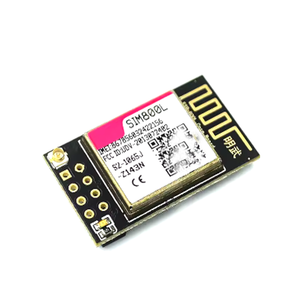Introduction to SIM Module GSM
The SIM module GSM serves as a critical component in mobile connectivity for various devices and applications. This compact module facilitates communication between a user’s device and the cellular network, enabling voice and data transmission, which is essential for modern wireless communication. With the continuous advancements in technology, the SIM module GSM has evolved to meet the demands of IoT (Internet of Things), mobile communication, and beyond, making it a vital tool in numerous industries.
Types of SIM Module GSM
There are several types of SIM module GSM available on the market today, designed to cater to different user needs and applications. The major types include:
- Embedded SIM (eSIM): A fixed SIM chip within devices that enhances security and enables remote provisioning.
- Micro SIM: A smaller version of the standard SIM card, often used in smartphones.
- Nano SIM: The smallest SIM card size currently in use, commonly found in the latest smartphones.
- Standard SIM: The traditional size of a SIM card used in older mobile phones.
- SIM800 and SIM900 Modules: GSM/GPRS modules used primarily for IoT applications, ideal for remote monitoring and control.
Applications of SIM Module GSM
The SIM module GSM has a wide range of applications across various sectors, each benefiting from the reliable connectivity it provides. Key applications include:
- Smartphones: Utilized for making calls, sending texts, and accessing the internet.
- IOT Devices: Integrates with sensors and controllers for real-time data transmission in smart cities, agriculture, and industrial automation.
- Automotive: Enables telematics and vehicle tracking systems, allowing for features like navigation and emergency calling.
- Surveillance systems: Facilitates remote monitoring and control of security cameras and alarms.
- Healthcare: Used in telehealth devices for patient monitoring and communication with healthcare providers.
Features and Advantages of SIM Module GSM
The SIM module GSM is enriched with numerous features that enhance its functionality, making it highly advantageous for users:
- Universal Compatibility: Works with various devices across different platforms for seamless connectivity.
- High Data Transfer Rate: Supports 2G, 3G, and even newer technologies, ensuring fast communication.
- Robust Security: Offers encryption and secure connections, vital for personal data protection.
- Compact Design: Easy to integrate into small devices, providing flexibility in design.
-
- Energy Efficient: Designed for low power consumption, which is critical for battery-powered devices in IoT applications.




















































































































































































